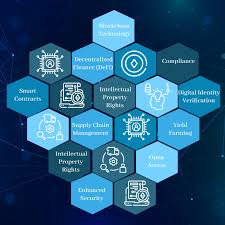
In the fast-changing world of finance, blockchain technology has become a powerful force. It is no longer just the backbone of Bitcoin or other cryptocurrencies. Today, blockchain is shaking the foundation of the traditional banking system in the U.S.. From faster transactions to lower fees and more transparency, blockchain is offering things that banks have struggled with for decades.
This disruption is not just a prediction for the future. It is already happening. And it’s causing U.S. banks to rethink their business models, invest in new technologies, and even partner with blockchain startups to stay relevant.
In this article, we will explore how blockchain works, how it’s changing the banking system, and why it could be the biggest financial shift since the invention of the internet.
Table of Contents
What Is Blockchain Technology in Simple Terms?
At its core, blockchain is a digital ledger. Think of it like a shared notebook where every transaction is written down and visible to everyone who uses it. The best part? Once something is written in this notebook, it cannot be changed or erased.
This makes blockchain highly secure, transparent, and almost impossible to hack. Every transaction is recorded in a “block” and then linked to previous blocks, forming a “chain.” That’s why it’s called a blockchain.
Unlike traditional banking systems that store all your data in one place (like a server in a bank), blockchain is decentralized. This means no single person or organization controls it. That’s a game-changer.

Traditional Banks vs Blockchain: What’s the Big Deal?
Traditional banks have been around for centuries. They act as the middlemen for all financial activities—whether it’s sending money, applying for a loan, or making investments. But this model has several problems:
- Slow transactions (especially international ones)
- High fees
- Limited transparency
- Centralized control
- Risk of fraud or data leaks
On the other hand, blockchain-based systems can process transactions in seconds or minutes, charge little to no fees, and offer real-time tracking and security.
Let’s break down some of the ways blockchain is disrupting banks in the U.S.

1. Faster and Cheaper Money Transfers
One of the biggest use cases of blockchain is in cross-border payments. In the traditional system, sending money from the U.S. to another country can take several days. You also lose a portion of your money to conversion fees and service charges.
Blockchain platforms like Ripple (using XRP) or Stellar offer instant international transactions with almost no fees. This is especially helpful for people who send money to family overseas or businesses that work globally.
Even some U.S. banks are starting to explore blockchain-based payment networks. But these private blockchains still lag behind public, open networks in speed and cost.
2. Smart Contracts Are Replacing Middlemen
Smart contracts are self-executing digital contracts written on the blockchain. They automatically carry out actions when certain conditions are met.
For example, imagine a loan agreement. Instead of a bank officer reviewing everything, a smart contract could approve, release, and track the loan—all without human help.
This technology is cutting down on paperwork, reducing fraud, and making financial services more accessible, especially for small businesses and individuals who face bias in traditional systems.
3. Blockchain Lending and DeFi Are Growing
DeFi, or decentralized finance, is another major area where blockchain is disrupting banks. DeFi platforms let people lend or borrow money directly from each other without using a bank.
These platforms are run entirely on code and smart contracts. Users earn interest by lending their crypto, while borrowers get quick access to funds without going through credit checks or long approval processes.
This model is especially attractive to younger Americans who are skeptical of banks or who want more control over their money.
4. Increased Financial Inclusion
Millions of Americans, especially in rural or underbanked communities, don’t have access to traditional banking services. High fees, bad credit, or lack of documentation keep them out of the system.
Blockchain offers a solution by removing barriers to entry. With just a smartphone and internet access, anyone can store money, send payments, or access loans through blockchain apps.
This could be a huge shift toward financial freedom for those left behind by the banking system.
5. Better Security and Transparency
Banks store all customer data in central databases. If hackers get in, millions of users can be affected, as seen in several recent data breaches.
Blockchain’s decentralized and encrypted nature makes it much harder to attack. Plus, every transaction is recorded in a public ledger, making it transparent and easy to audit.
Some U.S. banks are now testing private blockchains to make their systems more secure and reliable.
6. The Rise of Central Bank Digital Currency (CBDC)
Even the U.S. government is paying attention. The Federal Reserve is exploring the idea of a digital dollar using blockchain technology. A Central Bank Digital Currency (CBDC) would combine the benefits of blockchain with the trust of a government-backed currency.
If launched, this could change how Americans use money, possibly reducing the need for physical banks altogether.
Challenges Ahead for Blockchain and Banking
Of course, the transition won’t happen overnight. Blockchain still faces several challenges:
- Regulatory uncertainty
- Volatility of cryptocurrencies
- Lack of public understanding
- Integration with existing banking systems
Many banks are also trying to protect their business by lobbying for strict crypto regulations. But the momentum of blockchain adoption seems unstoppable.
What This Means for the Future of Banking in the U.S.
The traditional banking system in the U.S. is at a turning point. While banks won’t disappear anytime soon, they must adapt or risk becoming irrelevant. Blockchain is forcing them to rethink their role—not just as money managers, but as tech innovators.
Consumers, on the other hand, now have more options and more power. They can choose faster, cheaper, and more open financial services without relying entirely on banks.
As blockchain technology matures, we may soon live in a world where your bank is no longer a building, but a secure, digital network in your pocket.
Final Thought:
The blockchain revolution in banking is not a matter of “if”—it’s a matter of “when.” U.S. banks can either fight it or join it. But one thing is clear: the future of finance will be decentralized, digital, and driven by blockchain.
Read More :-Top 10 Tech Hubs in the USA Outside Silicon Valley






